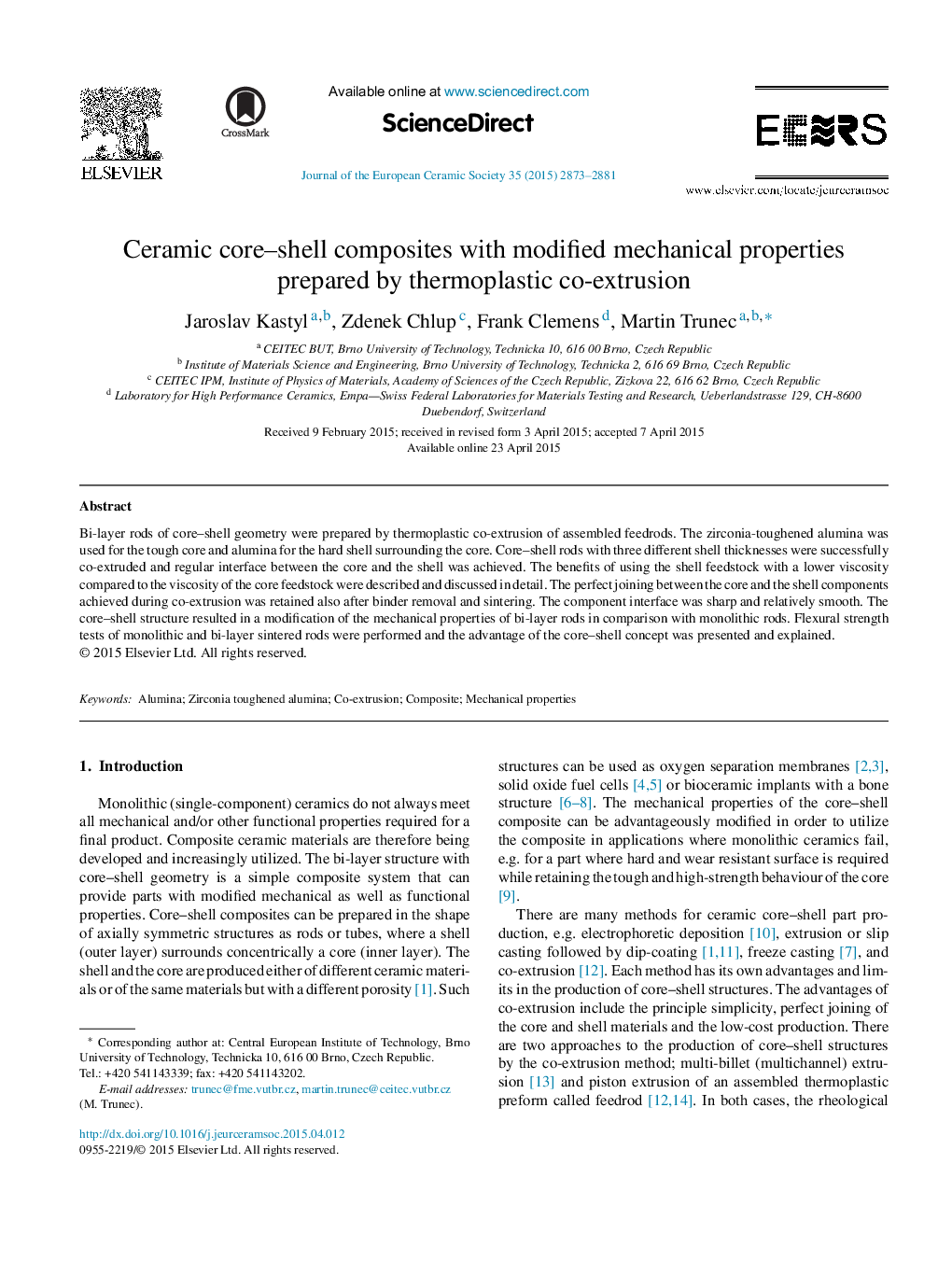| Article ID | Journal | Published Year | Pages | File Type |
|---|---|---|---|---|
| 1473975 | Journal of the European Ceramic Society | 2015 | 9 Pages |
Bi-layer rods of core–shell geometry were prepared by thermoplastic co-extrusion of assembled feedrods. The zirconia-toughened alumina was used for the tough core and alumina for the hard shell surrounding the core. Core–shell rods with three different shell thicknesses were successfully co-extruded and regular interface between the core and the shell was achieved. The benefits of using the shell feedstock with a lower viscosity compared to the viscosity of the core feedstock were described and discussed in detail. The perfect joining between the core and the shell components achieved during co-extrusion was retained also after binder removal and sintering. The component interface was sharp and relatively smooth. The core–shell structure resulted in a modification of the mechanical properties of bi-layer rods in comparison with monolithic rods. Flexural strength tests of monolithic and bi-layer sintered rods were performed and the advantage of the core–shell concept was presented and explained.
